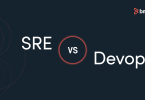Java is a popular programming language for enterprise businesses. In fact, in both 2018 and 2019, almost 63% of Java programmers exclusively programmed in Java. That speaks to the popularity of the language that can be used for everything from web applications to back-end development.
In 2020, unforeseen challenges have shifted enterprise business leaders from planning for a natural progression of digital evolution that occurs after digital transformation to reacting to the immediate needs of customers and employees during COVID-19 pandemic. Despite the maneuvering, Java remains stable, consistent, practical, and engaging for programmers looking to continue to develop their skills in this competitive business climate.
Here’s the state of Java in 2020:
Summing Up the Java Ecosystem
Data on the state of Java suggests the java ecosystem is unique because it is static in some aspects and quite dynamic in others. For instance, Java developers are sometimes professionals of habit, research suggests, because they tend to stick with what they know and, in many cases, what they know is how to use Java 8 to create enterprise architecture and applications.
That said trends suggest more adoption of Java 11 by those who are looking to stay ahead of the curve. Moreover, Java developers have been quick to adopt tools like Spring Boot to help them create agile customizations for enterprise businesses. In these ways, Java programmers remain innovative and dynamic
This is the current state ecosystem that Java programmers navigate in 2020:
Java 8: The Gold Standard
One important thing to understand about Java usage in 2020 is that Java 8 is still the gold standard. Most users prefer Java 8, although Java 11 is beginning to gain some popularity of its own.
While the vast majority of people are using Java 8, according to data from New Relic, almost half of the users are lagging behind on updates, which might leave them susceptible to security risks. It’s important for IT professionals to keep their instances of Java up to date in order to provide the most secure environment for development.
Oracle Sees Emergence of New Competition
While fondness and comfort levels with Java 8 seem pretty static year over year, competition appears dynamic in 2020. Historically, Oracle has always been the standout pioneer in thought leadership and innovation surrounding the Java ecosystem. However, in 2020, new and old competitors are arriving on the scene with applications for Java that service enterprise businesses. Some of these competitors are AdoptOpenJDK, IcedTea, Azul, IBM, Amazon, SAP and more as Java gains popularity on the mainframe and beyond.
“Garbage Collection” Still Point of Discussion
Garbage Collection algorithms have long been a point of engagement for developers who appreciate its role in memory management in Java 8. That doesn’t change in 2020. Parallel and G1 carry the torch in terms of widely used Garbage Collection algorithms, designed to clean any junk code and remnants left behind by developers and as the bi-product of functional code, preserving memory for computing tasks.
Top Popularity: Tomcat and Springboot
Baeldung research suggests that Spring Boot 2 adoption has doubled in the last year, up from 30% to more than 60%. Spring Boot 2 allows enterprise developers to specialize in micro-services. Micro-services are a uniquely DevOps approach to service management architecture that allows developers to focus on one set of simple features or functions, that are deployed as a microservice, instead of coding an entire application or service platform–hence the name. When businesses deploy microservices architecture, they become more agile, flexible, and ready to scale.
As far as servers go, Tomcat by Apache still leads in popularity among developers who rely on servers to create service architecture. Tomcat’s streamlined open-source platform, which uses Jakarta EE, is a natural segue for developers who are responsible for building fast, agile services in a language they understand without a lot of complications. Another server gaining popularity is Jetty. Still, some developers aren’t using an outsourced server platform at all, preferring to work with their own tools and resources or opting solely for a microservices platform like Spring Boot to create microservices applications over traditional coding.
Are Java Programmers Beginning to Diversify?
While many of the programmers entering the market today are well versed to write code in a number of languages, including Java, many existing Java developers tend to stick to Java as their primary coding language, and in some cases, the only language they can program in, competently, at the enterprise level.
In 2020, however, Java developers should strongly consider diversifying their programming practice, despite the static trend to remain committed solely to Java. That’s because with COVID-19 and an unpredictable economy, it’s important for developers to offer as many skills as possible to make themselves as marketable as they can be.
While the need for Java developers is not likely to decline, the face of the workforce is changing nonetheless. Developers who want to remain specialized in Java, and Java only, can do so because it is so practical for enterprise businesses. However, these professionals should consider expanding their offerings in other ways, including seeking management certifications that can help them move through the chain of IT management as a Java developer or development consultant.
For Java programmers seeking to become more recession-proof by learning additional programming languages, here are some of the top ones to learn in 2020:
- Python: While support for Python 2 is ending, keen developers are smart to learn Python and stay on top of their upgrades as it is becoming a popular language for enterprise DevOp environments.
- C: Learning a lower language like C is always a good choice. Like Java, C is a baseline language that can be applied in a number of ways including server-side. It’s popularity makes it continuously relevant.
- JavaScript: JavaScript is a client-side language that offers familiar code structures for those who know Java, and allows for faster more agile programming in the front-end.
- COBOL: While decades old and almost forgotten, COBOL is making a comeback in the age of Coronavirus as government agencies with antiquated mainframes require servicing to keep up with changes in policy, like unemployment changes, for example.
These postings are my own and do not necessarily represent BMC's position, strategies, or opinion.
See an error or have a suggestion? Please let us know by emailing blogs@bmc.com.





